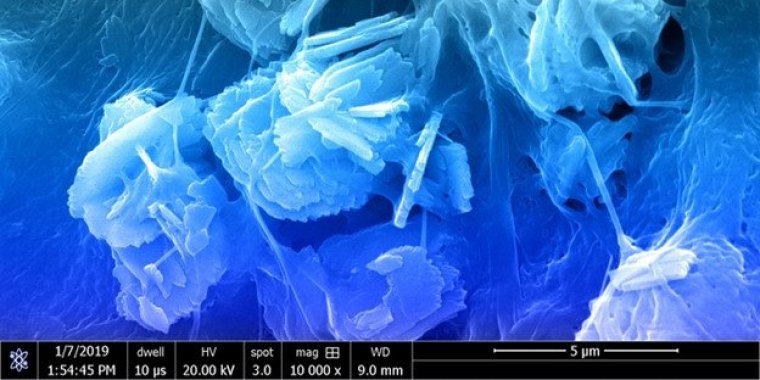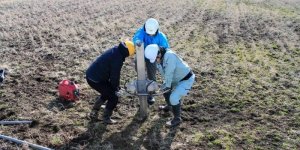| News / Science News |
Scientists develop collagen scaffold materials for craniofacial bone and tissue repair
Repairing bone fractures and tissue injuries of the face and skull is challenging due to cell structure and bone shape. As a result, treating craniomaxillofacial trauma often involves biomaterials. Researchers at the University of Illinois Urbana-Champaign examined the properties of collagen scaffold biomaterials to evaluate and compare their efficacy. The research will result in the development of next generation biomaterials used in bone reconstruction and tissue regeneration, the scientists said.

A mineralized collagen scaffold showing the mineral crystals and collagen fibers. Photo: Marley Dewey
"There are many types of cells in the bone environment that contribute to healing, including stem cells that form bone, and monocytes that help with the immune response,” said Vasiliki Kolliopoulos of the University of Illinois Urbana-Champaign, a co-author of the paper.
“This study investigated how the scaffold material affects the combined behavior of these different cells."
The researchers modified biomaterials to include three different types of a components (glycosaminoglycans, or GAGs) in bone structure.
Stem cells were added to the scaffolds, and the scientists observed how the modified biomaterials affected bone regeneration and blood vessel formation. They noted which scaffold had the largest increase in blood vessel formation.
The researchers also examined the impact of the engineered scaffolds on other types of cells, and how each scaffold impacts different cell types.
The next phase of the study involves examining how stem cells grown in scaffolds react to inflammation and how each scaffold material affects cell growth and regeneration.
"After we identify how the scaffolds influence the cells, we want to combine the different cell types to see what happens," said Kolliopoulos.
"We’re trying to develop biomaterials that will be used by surgeons to repair bone defects. Understanding what these materials do to multiple cell types is important." (National Science Foundation)





